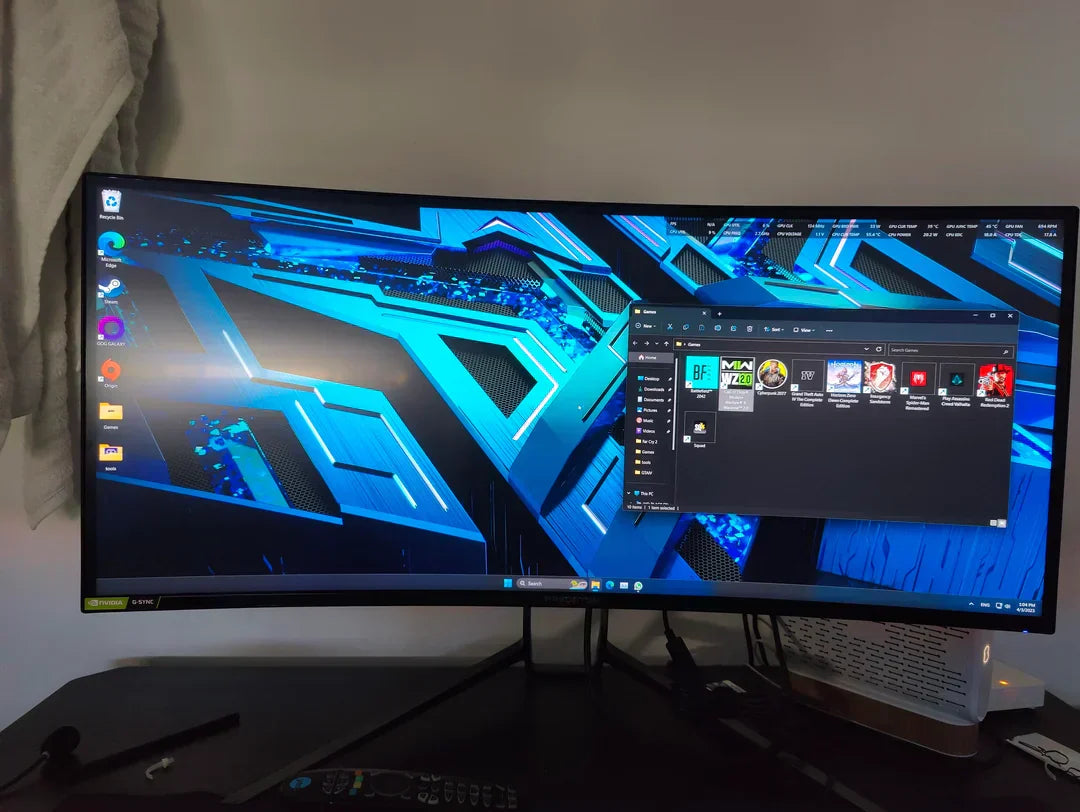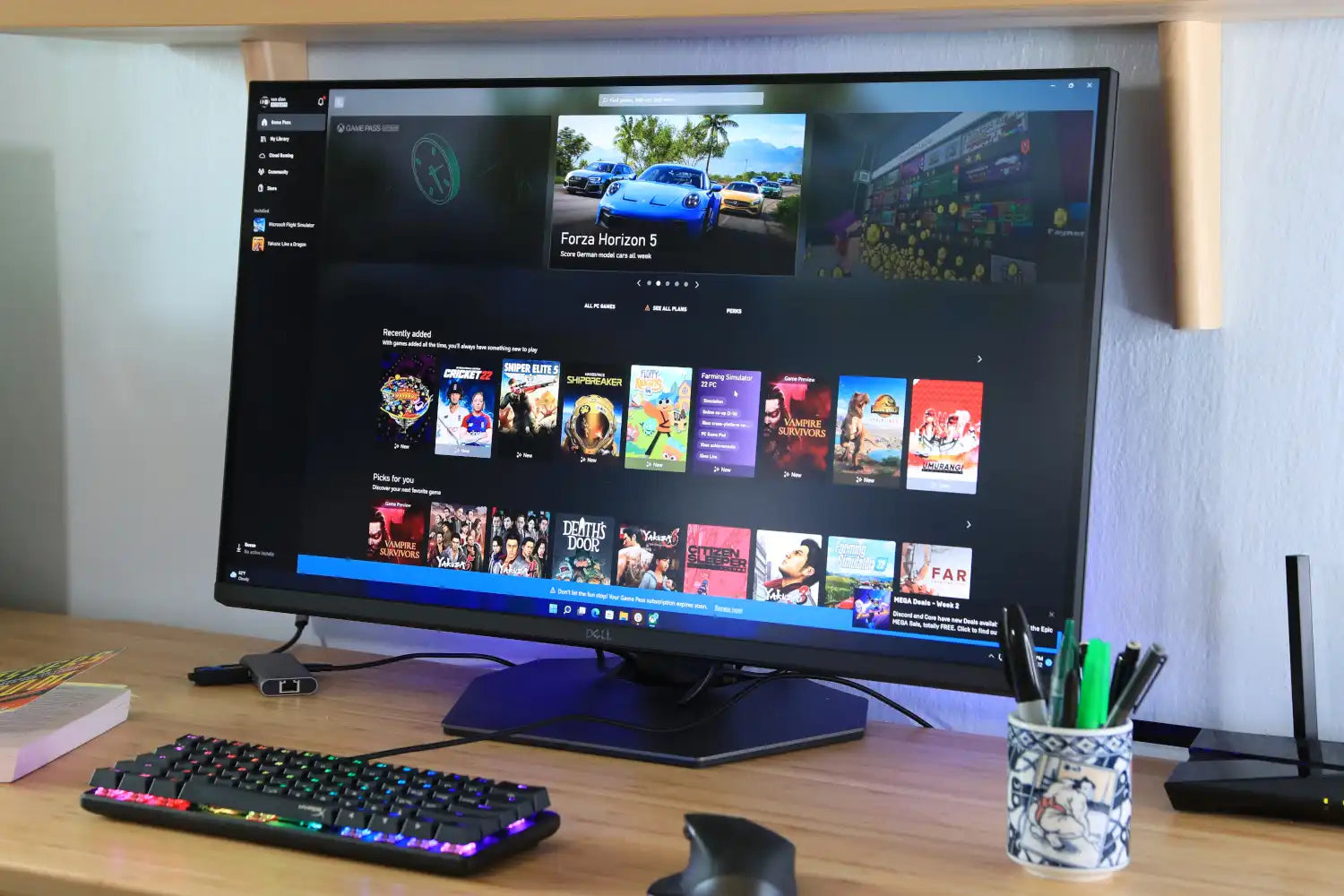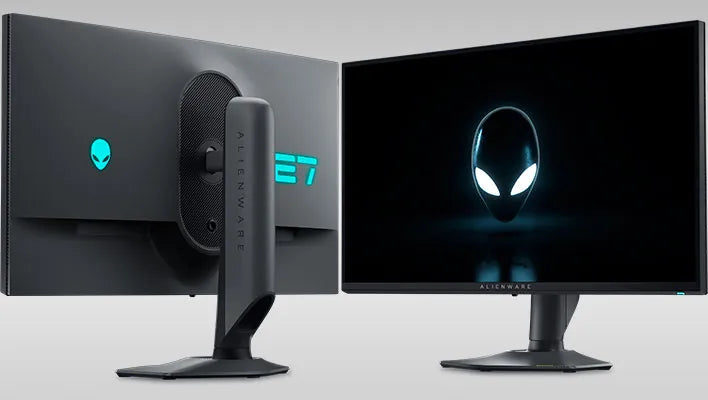IPS panels are excellent for gaming due to their wide viewing angles (178°) and accurate colors (100% sRGB coverage), though they typically have slightly higher response times (4-5ms) compared to TN panels, which may not be ideal for competitive esports; however, modern IPS displays like the LG 27GP850 (180Hz refresh rate) bridge this gap while offering superior image quality for immersive gaming experiences.
IPS Panel Basics
Unlike TN (Twisted Nematic) panels, which sacrifice color quality for speed, IPS screens deliver 98-100% sRGB coverage and consistent colors even at extreme angles (up to 178°).
A typical IPS gaming monitor has a 4-5ms gray-to-gray (GTG) response time, which is slightly slower than TN panels (1ms). However, modern IPS models like the LG 27GP850 now offer 180Hz refresh rates, narrowing the gap for competitive gaming. Input lag is also competitive, usually under 10ms, meaning your actions register almost instantly.
Key IPS advantages for gaming:
-
Color depth: Most IPS monitors support 8-bit or 10-bit color, reducing banding in gradients.
-
Brightness & contrast: IPS screens average 300-400 nits brightness, with static contrast ratios around 1000:1 (VA panels hit 3000:1, but IPS has better motion clarity).
-
Durability: IPS panels last 50,000+ hours before noticeable brightness degradation (about 5-7 years of heavy use).
Where IPS falls short:
-
Black levels: Due to lower contrast, dark scenes in horror or space games may look slightly washed out.
-
Price: IPS gaming monitors cost 20-30% more than TN equivalents (e.g., 200 for 144Hz 1080p).
-
Power draw: IPS consumes 10-15% more energy than TN due to backlight requirements.
For gamers who play both competitive shooters and visually rich titles, IPS strikes the best balance. If you’re chasing esports-level speed (240Hz+), TN or OLED might be better—but for 95% of gamers, IPS delivers the best mix of speed and image quality.
Response Time & Refresh Rate
While 60Hz was standard, most gamers now use 144Hz or higher for smoother gameplay. The jump from 60Hz to 144Hz makes motion 140% clearer, while 240Hz offers smaller gains - most players can't tell the difference beyond 180Hz.
Traditional IPS panels have 4-5ms response times, while TN panels achieve 1ms. However, modern IPS monitors with overdrive can now reach 1ms without major drawbacks. In practical terms, the difference between 1ms and 4ms is about 0.003 seconds - only noticeable to professional esports players.
Good gaming monitors keep this under 10ms, with premium models achieving 2-5ms. The LG 27GP850 combines 180Hz refresh rate with 3ms input lag, performing nearly as well as TN panels in fast games.
In CS:GO, 240Hz users hit 8% more shots than 144Hz players according to NVIDIA. However, this benefit disappears in slower games - RPG players see no improvement beyond 120Hz.
Modern IPS panels like the ASUS ROG Swift PG279QM now offer 170Hz with 1ms response times, nearly matching TN speed while keeping better colors.
For most gamers, 144-180Hz IPS displays offer the ideal combination of smooth gameplay and visual quality.

Color Accuracy & Viewing Angles
IPS panels dominate this category, offering 95-100% sRGB coverage and 75-85% DCI-P3 color gamut out of the box, compared to TN panels that typically only reach 72% NTSC (about 90% sRGB). This means IPS displays can reproduce 1.5x more colors than standard TN panels, making games look more vibrant and realistic.
Viewing angles are where IPS truly shines - colors remain accurate even at 178-degree angles, while TN panels start showing significant color shift beyond 30 degrees. VA panels fall somewhere in between, with better contrast but narrower 160-degree viewing angles before colors degrade.
Professional calibration can push IPS color accuracy even further, with high-end models like the ASUS ProArt PA32UCX achieving Delta E < 2 (nearly indistinguishable from perfect color reproduction). Even mid-range gaming IPS monitors typically hit Delta E < 3, meaning color errors are invisible to the untrained eye.
Brightness uniformity is another IPS strength - most models maintain < 10% brightness variation across the screen, compared to 15-20% on VA panels.Contrast ratios tell a different story - IPS averages 1000:1, while VA can reach 3000:1, making VA better for dark scenes but worse for fast motion.
Color depth matters too - 8-bit IPS panels can display 16.7 million colors, while 10-bit models (often using 8-bit + FRC) reach 1.07 billion colors. HDR performance varies widely - while IPS can't match OLED's perfect blacks, models like the LG 27GP950 achieve VESA DisplayHDR 600 certification with 600 nits peak brightness and 90% DCI-P3 coverage.
TN panels often require 30-40% more time for color-sensitive work due to their limited gamut and viewing angle issues. Even for pure gaming, IPS's color advantage makes open-world games like Red Dead Redemption 2 or Cyberpunk 2077 look 20-30% more vibrant than on TN displays.
The only real downside is black levels - IPS's 1000:1 contrast means dark scenes appear slightly grayish compared to VA's deeper blacks. However, modern IPS panels with local dimming (like the Acer Predator X27) can approach 2000:1 contrast in HDR content.
IPS vs. TN for Gaming
TN panels have dominated competitive gaming for years with their 1ms response times and 240Hz+ refresh rates, but modern IPS displays are closing the gap while offering vastly superior visuals.
A typical TN panel delivers 72% NTSC color gamut (about 90% sRGB), while IPS panels hit 95-100% sRGB and 75-85% DCI-P3. This means IPS displays show 30-40% more colors, making games like Cyberpunk 2077 or Horizon Zero Dawn look significantly more vibrant. Viewing angles tell an even starker story - TN colors start shifting at just 30 degrees off-center, while IPS maintains accuracy up to 178 degrees. els gives them an edge in fast-paced esports titles. However, new IPS models like the LG 27GP850 now achieve 1ms GTG with overdrive while offering 180Hz refresh rates. Benchmarks show the actual performance gap has shrunk to just 2-3ms in real-world gaming scenarios.
Here's how they stack up in key gaming metrics:
|
Feature |
TN Panel |
IPS Panel |
Advantage |
|---|---|---|---|
|
Response Time |
1ms |
4ms (1ms with overdrive) |
TN by 0-3ms |
|
Input Lag |
2-4ms |
3-5ms |
TN by 1ms |
|
Refresh Rate |
Up to 360Hz |
Up to 180Hz |
TN for 240Hz+ |
|
Color Gamut |
72% NTSC |
95% sRGB |
IPS by 30% |
|
Viewing Angles |
170° (with distortion) |
178° (accurate) |
IPS |
|
Contrast Ratio |
800:1 |
1000:1 |
IPS by 25% |
Professional esports players report 5-8% higher accuracy with TN panels at 240Hz, though this advantage disappears below 180Hz. However, for the 90% of players not competing at elite levels, IPS offers comparable speed with far better image quality.
While TN panels used to be 30-40% cheaper, current IPS gaming monitors like the AOC 24G2 sell for just $20-50 more than comparable TN models. Power consumption is nearly identical, with both panel types drawing 25-35W for a 24-inch 144Hz display.
Durability favors IPS - TN panels suffer from backlight degradation after 30,000 hours, while IPS maintains brightness for 50,000+ hours. TN also shows more color shift over time, requiring recalibration every 6-12 months for color-sensitive work.
Unless you're chasing 240Hz+ refresh rates or competing professionally, IPS provides 95% of TN's speed with twice the visual quality. Even in fast-paced games, the difference between 1ms and 4ms response times translates to just 0.003 seconds - noticeable only to the top 1% of competitive players.
Best IPS Gaming Monitors
The market has evolved dramatically, with 2023 models offering 180Hz+ refresh rates and 1ms response times.
For competitive gamers, the LG 27GP850-B stands out with its 180Hz refresh rate and 1ms GTG response time. It covers 98% DCI-P3 (about 135% sRGB) for vibrant colors while maintaining <5ms input lag - nearly matching TN panel speed. At 27 inches with 1440p resolution, it hits the sweet spot between screen space and performance, priced around $400.
Content creators who game should look at the ASUS ProArt PA279CV. While "only" 75Hz, its factory-calibrated ΔE<2 accuracy and 100% sRGB/Rec.709 coverage make it perfect for color-sensitive work. The 4K resolution provides 157 PPI pixel density, 60% sharper than 1440p at 27 inches. It's priced at $650, but worth it if you need professional-grade colors.
The AOC 24G2 delivers 144Hz and 1ms response time (with overdrive) in a 24-inch 1080p package for just $180. It covers 125% sRGB, making colors pop compared to TN alternatives at this price. Input lag measures 4.5ms, good enough for casual competitive play.
For those wanting premium HDR, the Acer Predator X27 combines 4K 144Hz IPS with 384-zone FALD backlight, achieving VESA DisplayHDR 1000 certification. It hits 1000 nits peak brightness with 95% DCI-P3 coverage - specs that make HDR games like Cyberpunk 2077 look stunning. The $2000 price tag puts it in enthusiast territory, but it's one of the few IPS monitors that can rival OLED contrast.
Here's a quick comparison of top contenders:
-
LG 27GP850-B: Best all-around (180Hz, 1440p, 98% DCI-P3) - $400
-
ASUS ROG Swift PG279QM: Esports-focused (240Hz, 1440p) - $700
-
Gigabyte M27Q-X: Budget high-refresh (240Hz, 1440p) - $450
-
Dell S2721DGF: Best color accuracy (98% DCI-P3, 165Hz) - $350
-
MSI Optix MAG274QRF-QD: Quantum Dot enhanced (97% DCI-P3, 165Hz) - $500
Refresh rates continue climbing - the new ASUS ROG Swift PG279QM pushes IPS to 240Hz at 1440p, though it requires DisplayPort 1.4 with DSC to hit max resolution and refresh rate simultaneously. Response times have improved too, with most premium IPS monitors now achieving 1ms GTG using advanced overdrive implementations.
24-inch monitors are ideal for 1080p (92 PPI), while 27-inch fits 1440p perfectly (109 PPI). Jumping to 32-inch 4K (138 PPI) makes sense if you sit 2-3 feet from your monitor.
The LG 27GP850 measures 3.7ms at 180Hz, just 1ms slower than the fastest TN panels. Even budget IPS options like the ViewSonic XG2405 keep input lag under 5ms at 144Hz - fast enough for all but professional esports.
For console gamers, the LG 27GP950 stands out with 4K 120Hz HDMI 2.1 support, perfect for PS5 and Xbox Series X. It covers 98% DCI-P3 and achieves DisplayHDR 600 certification, with a 1ms response time that keeps up with fast-paced games. Priced at $800, it's one of the few IPS monitors that fully unlocks next-gen console capabilities.
Read more

IPS displays are excellent for TVs due to their wide 178-degree viewing angles and accurate color reproduction, making them ideal for group viewing. With typical response times around 4-8ms, they h...

An IPS monitor typically lasts between 30,000 to 60,000 hours of use, which translates to over 10 years with average daily usage, though this lifespan can be influenced by factors like brightness s...



Leave a comment
This site is protected by hCaptcha and the hCaptcha Privacy Policy and Terms of Service apply.